RALEIGH, N.C.: This Southern capital city sits halfway between New York City and Florida. It’s a college town, part of North Carolina’s “The Research Triangle” made up of North Carolina State University, Duke University in Durham, and the University of North Carolina at Chapel Hill. The second-largest city in the state, it’s well-situated, about 120 miles from the Atlantic Ocean and a four-hour drive from the Great Smoky Mountains. On the long list of places to go in the city is Burning Coal Theatre Company. “I think we are kind of a happy medium between big-city life and some place like Florida, and a lot of people make their way here to retire, so there is a pretty good audience for theatre,” says artistic director Jerome Davis. American Theatre caught up with Davis via phone to learn more about producing theatre in the South Atlantic region.
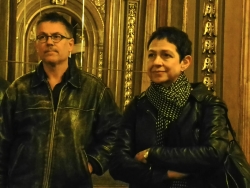
Who founded the Burning Coal Theatre Company, when, and why?
I founded Burning Coal in 1995 with my wife, Simmie Kastner. We moved to Raleigh in 1996 and produced our first season beginning in May 1997. We feel that the Southeastern U.S., home to about 40 percent of the nation’s population, has fewer professional theatres than other areas of the country, and is therefore more in need of the kind of work we hoped to do. The availability of art in a region should not be predicated on the amassed wealth of the area, but on the area’s need for art.
Tell us more about yourself.
I was raised in a (then) tiny little town called Murfreesboro, Tenn., along with my two brothers, my twin, Tony (who is a high school drama teacher in a town near there), and Tim (who is a college drama teacher in Lexington, Ky.). We grew up on a farm and had no idea what we wanted to do with our lives. My late father was a big believer in boys learning to speak well, so when he saw that our high school offered a class called “Speech” he insisted that we take it. At the time in Murfreesboro there were no theatre classes in high school—they called it “Speech.” My brothers and I walked into that auditorium and, in some real way, never walked out again.
Simmie was kind of a “physics brat.” She moved around when her father, a physicist, got work: Cleveland, Chicago, Washington, D.C. She wanted to be a set designer and got into Northwestern, but her teachers insisted that a woman would never succeed in that field and refused to give her A’s, despite her acing every test and doing every assignment as required. She eventually let them run her out of the business and went and got degrees at American University in D.C. in computer science and in painting. She probably would never have returned to theatre if we had not met. She has a great business head and is a terrific artist.
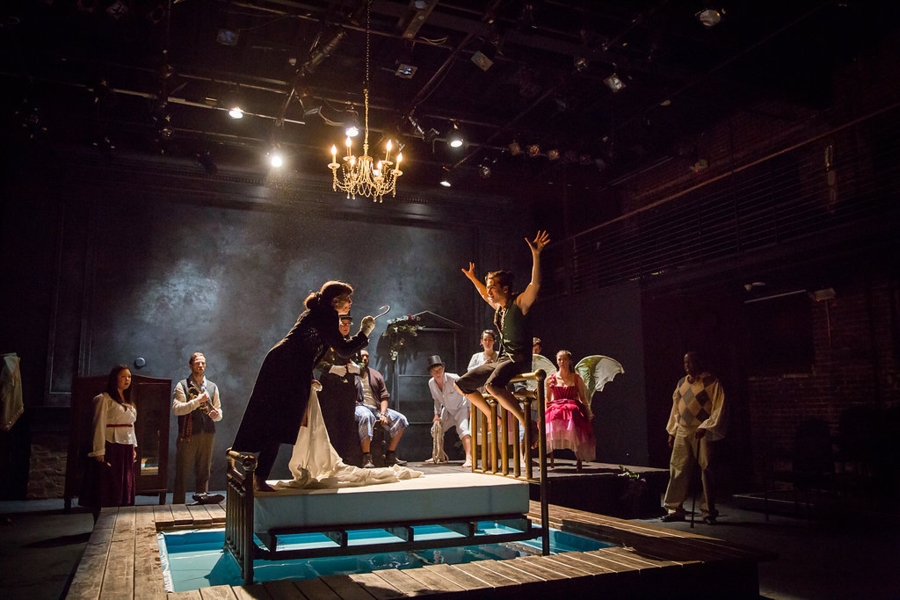
What sets your theatre apart from others in your region?
We have managed to avoid any significant debt in our history. We have a long-term lease on a great space, which we converted from an old school auditorium into one of the most dynamic theatre spaces I’ve ever had the pleasure to work in or see theatre in. It is also rich with history, as it is the room in which the school board met in 1960 and voted to begin the desegregation of Raleigh schools.
I think Simmie and I are very hard workers and are relentless in pursuit of what we want—and that may be the thing that sets us apart. Also, I know the business pretty well, and I keep myself aware of what plays are out there, so putting together a season is a pleasure for me. When I was a kid, while others were doodling geometric patterns or weird faces on the perimeter of their notebooks during a dull class, I would doodle seasons. I was fascinating by the impact of plays on an audience, and frequently thinking about how plays might work together to create a coherent, meaningful season.
How did the company get its name?
It is from the Bible, Romans, 12:20. It’s a verse that has to do with effecting change through positive rather than negative means.
Who is your audience?
Everyone.
Tell us about your favorite theatre institution other than your own, and why you admire it.
I love Trinity Repertory Company in Providence, R.I. I had the good fortune to be hired by Richard Jenkins for his first season as artistic director there. Adrian Hall came back to direct his own version of A Christmas Carol, so I got to work with him, Richard, David Wheeler, and a company of magnificent actors, many of whom are still there and all of whom worked together in a way that made me understand the value of ensemble. Also, with Eugene Lee as house designer, I got to understand the value of design pretty quickly.
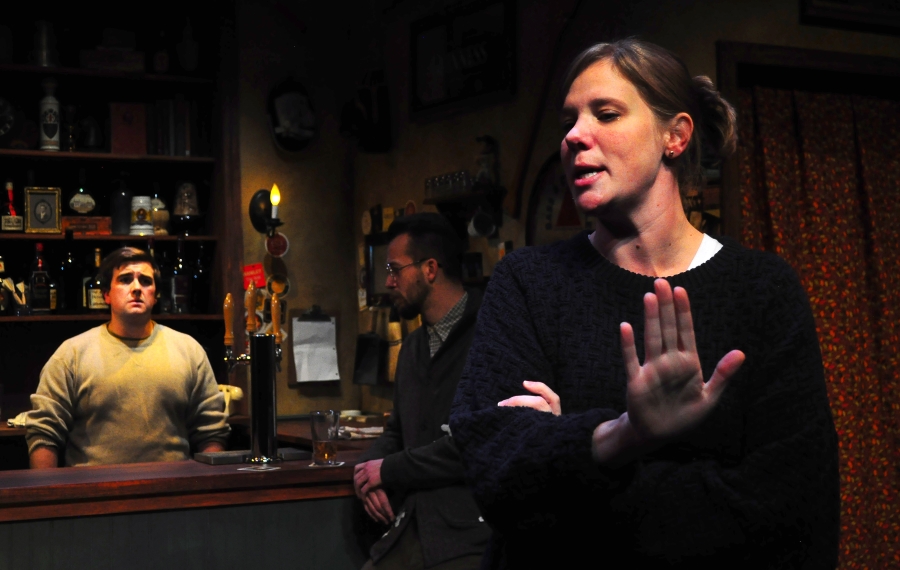
How do you pick the plays you put on your stage?
If I like it, if it moves me, if I can see it in my mind. I like plays that are fair, that don’t set up “straw men” just to shoot them down. I’ve always felt that was cheap and antithetical to the artistic impulse, which I think has to do with exploring human behavior, not ridiculing it. Also, if the title page says, “written by Conor McPherson,” then I’m probably going to do it!
What’s your annual budget, and how many artists do you employ each season?
My wife and I started with a budget of $30,000, most of which was wedding gift money. We’re up to about $550,000 now. We hire about 100 actors, stage managers, technical, and design folks each season.
What show are you working on now? Anything else in your season that you’re especially looking forward to?
We open a world premiere, Ashe in Johannesburg, on Jan. 24. I commissioned it from a young playwright, Hannah Benitez, who is bound for glory, I think. She’s a young Latina writer based in Miami and in New York, and she’s the real deal. Next season we’ll open with Clare Bayley’s The Container, which we are going to stage in a shipping container in downtown Raleigh. It’s about the immigration question.
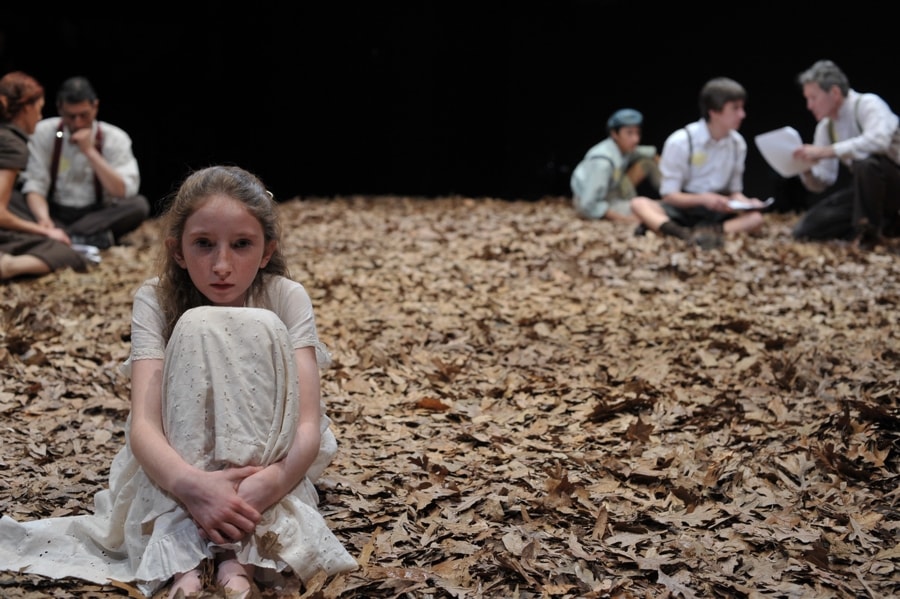
Strangest or funniest thing you’ve ever seen (or put) on your stage?
On the final performance of our first season, a Sunday matinee performed in an un-air-conditioned high school gymnasium—in Raleigh in June—I was feeling pretty good about myself. The show, David Edgar’s brilliant Pentecost, had received rave reviews and was playing to packed houses. I stood onstage to deliver the curtain speech and could not have been more conceited in my assessment of our first season. Something about “bringing light to the darkness,” as I recall. I walked offstage and heard the lead actor, Randy Rand, say the first line, “So, this is it?” Before the other actor could reply, a teenager stood up on the top row of the steeply raked scaffolding bleachers we’d set up…and puked over about a third of the audience. They stormed out, hot on my heels, like a scene from Exodus, covered in the stuff, and headed to the bathrooms. The house manager ran toward me whispering frantically, “Should we stop the show!?” “No,” I replied, “we’ll never get it started back!” She spent the next 40 minutes on her hands and knees with a bottle of 409 and a towel, and the play rumbled on. I don’t think she ever forgave me for that. At intermission, I ventured into the dimly lit cinderblock men’s room and encountered a 60-something year old man, bare-chested, washing his shirt out in the sink. “This is great!” he said. “What are you doing next?”
What are you doing when you’re not doing theatre?
I enjoy nonfiction books, particularly biographies, histories, and books about politics. I watch altogether too much sports. I have two great dogs, Nelson and Margo, who are love sponges, and I listen to a lot of podcasts. I also love taking trips to London when I can afford to get over there and see what they are up to.
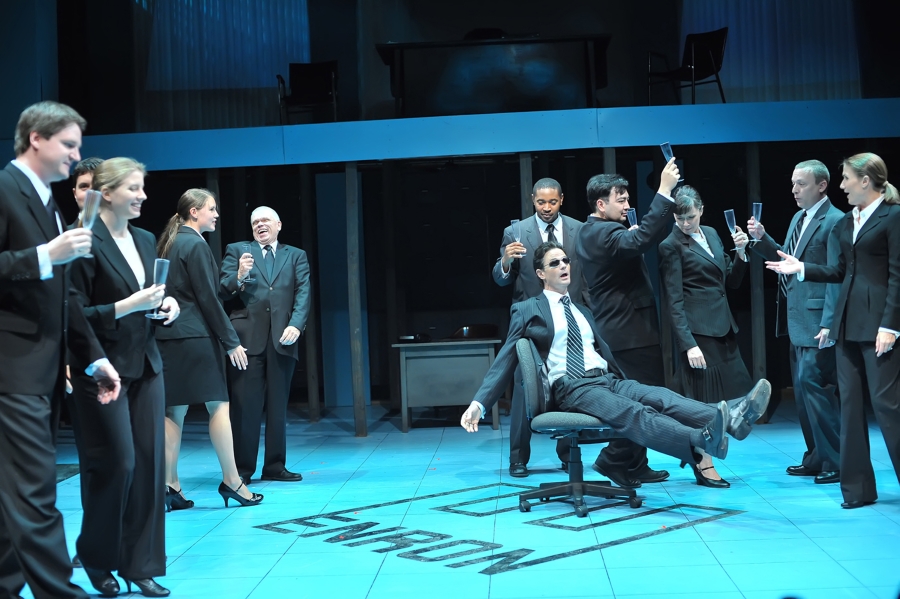
What does theatre—not just your theatre, but the American or world theatre—look like in, say, 20 years?
Well, I worry about that, to be frank. I’m not pleased with the fact that the Samuel French bookstore in London closed after over 150 years, that the Drama Book Shop may have followed suit in New York. I’m not a fan of digital media, honestly. I think there’s a pretty thin line between playscripts disappearing into the ether…and just plain disappearing. If a script can be held in one’s hand, then it is undeniable, it is a fact. When it is subject to the vagaries of technology, then its substantialness seems less to me.
I’m also concerned with the rapid and seemingly inexorable move toward two societies, one extremely wealthy and one very poor. We already largely segregate our artists into those who can afford an Ivy League-type education and those who cannot, and I don’t see much reason right now to think that will change going forward. We need systems in place to train people, but instead we have systems that accentuate the abilities of the very rich (those who can afford to participate without earning a living, taking care of a family member, etc.) and act as a barricade to all the rest of us. That’s like having 100 people in a room, kicking 95 of them out, and then saying, “Okay, let’s make some art!” You might end up with good art, but aren’t the chances much lower than if everyone could participate?
An earlier version of the article mislocated the universities that make up “The Research Triangle” in North Carolina.


